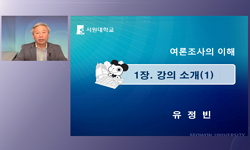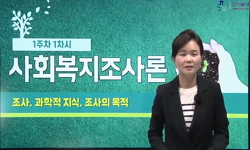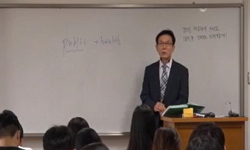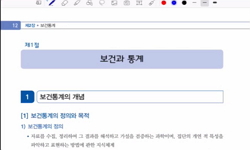소음성난청은 고려 시 되어야 하는 공중보건 문제로 알려져 있지만, 큰 소음의 노출로 인해 난청이 발생됨을 많은 사람들은 잘 인식하지 못하고 있다. 본 연구의 목적은 일반인들이 얼마나 ...
http://chineseinput.net/에서 pinyin(병음)방식으로 중국어를 변환할 수 있습니다.
변환된 중국어를 복사하여 사용하시면 됩니다.
- 中文 을 입력하시려면 zhongwen을 입력하시고 space를누르시면됩니다.
- 北京 을 입력하시려면 beijing을 입력하시고 space를 누르시면 됩니다.


설문지를 통한 소음성난청에 대한 인식 조사 및 분석 = Evaluation and Analysis of Awareness in Noise-induced Hearing Loss Using Survey
한글로보기https://www.riss.kr/link?id=A101070089
-
저자
이동욱 (한림대학교) ; 유재형 (한림대학교) ; 한우재 (한림대학교) ; Lee, Donguk ; Yu, Jyaehyung ; Han, Woojae

- 발행기관
- 학술지명
- 권호사항
-
발행연도
2015
-
작성언어
Korean
- 주제어
-
등재정보
KCI등재,SCOPUS,ESCI
-
자료형태
학술저널
- 발행기관 URL
-
수록면
274-281(8쪽)
-
KCI 피인용횟수
3
- DOI식별코드
- 제공처
-
0
상세조회 -
0
다운로드
부가정보
국문 초록 (Abstract)
소음성난청은 고려 시 되어야 하는 공중보건 문제로 알려져 있지만, 큰 소음의 노출로 인해 난청이 발생됨을 많은 사람들은 잘 인식하지 못하고 있다. 본 연구의 목적은 일반인들이 얼마나 중요하고 심각하게 소음성난청에 대하여 인식하고 있는지 22개의 설문 문항을 바탕으로 조사하고 그 결과를 분석하였다. 20대부터 60대의 성인 남녀 150명을 대상으로 청력손실과 이명을 포함하여 일반적인 건강 문제들에 대한 사회 및 개인적 중요도, 소음노출과 청력손실에 대한 인지 정도, 청력 보존 방법에 대한 인식을 문답하였다. 연구 결과, 다른 건강 문제들과 비교하여 응답자 중 약 17.33 %만이 청력손실을 '매우 큰 문제'로 인식하였다. 놀랍게도 다수의 응답자인 82 %는 청력손실에 관한 정보를 듣거나 보지 못하였다고 답변하였다. 전체 응답자 중 약 85 %의 응답자들은 큰 소음이 있는 환경에서 청력 문제 및 이명을 경험한 적이 있다고 답하였지만, 그 중 11.33 %만이 이어플러그를 착용해 본적이 있다고 응답하였다. 그러나 많은 응답자들은 추후 의료진이 권장하거나(80 %), 소음으로 인한 영구적 청력손실이 발생할 수 있다는 정보를 접한다면(78.67 %) 청력보호를 위해 소음 노출 시 이어플러그를 착용하겠다고 응답하였다. 소음으로 인한 영구적 청력 손실의 잠재성과 효율적인 청력 보호 방법에 대한 체계적인 교육으로 일반인들의 소음성난청을 예방하여야 하겠다.
다국어 초록 (Multilingual Abstract)
Although noise-induced hearing loss (NIHL) is a significant public health problem, many people might not be aware that exposure to loud noise could occur hearing loss. The purpose of this study is to evaluate and analyze how importantly and seriously ...
Although noise-induced hearing loss (NIHL) is a significant public health problem, many people might not be aware that exposure to loud noise could occur hearing loss. The purpose of this study is to evaluate and analyze how importantly and seriously people are aware of NIHL using a 22-question survey. It was administered to random 150 people including between 20 s to 60 s. The questionnaire contained questions about i) views toward general health issues including hearing loss and tinnitus, ii) noise exposure, and iii) views toward hearing protection. Results showed that hearing loss was defined on a likert scale as 'a very big problem' by 17.33 % of respondents compared with other health issues. Surprisingly, most respondents (82 %) had not heard, read, or seen anything lately related to the issue of hearing loss. Many respondents had experience hearing problem or tinnitus under loud noise situations (85 %), however, only 11.33 % of respondents had used earplugs. Fortunately, many could be motivated to try ear protection if they were advised by a medical professional (80 %) or were aware of the potential for permeant hearing loss (78.67 %). We concluded that awareness of the potential for permanent hearing loss with noise and effective methods of hearing protection should be announced to public for preventing NIHL.
참고문헌 (Reference)
1 U. Rosenhall, "The influence of ageing on noise-induced hearing loss" 5 : 47-53, 2003
2 T. Yamasoba., "Role of glutathione in protection against noiseinduced hearing loss" 784 : 82-90, 1998
3 C. Muchnik., "Preferred listening levels of personal listening devices in young teenagers : Self reports and physical measurements" 51 : 287-293, 2012
4 P. E. Brookhouser., "Noise‐induced hearing loss in children" 102 : 645-655, 1992
5 S. Sadhra., "Noise exposure and hearing loss among student employees working in university entertainment venues" 46 : 455-463, 2002
6 K. Kim, "Noise and Hearing: Occupational hearing loss" Idam Publishing 174-180, 2013
7 K. Kim, "Noise and Hearing" Idam 52-67, 2013
8 "National Institute on Deafness and Other Communication Disorders (NIDCD)"
9 S. E. Keith., "MP3 player listening sound pressure levels among 10 to 17 year old students" 130 : 2756-2764, 2011
10 G. Gallagher, "Hot music, high noise, and hurt ears : Are teens and young adults trading hearing ability for high volume?" 42 : 7-11, 1989
1 U. Rosenhall, "The influence of ageing on noise-induced hearing loss" 5 : 47-53, 2003
2 T. Yamasoba., "Role of glutathione in protection against noiseinduced hearing loss" 784 : 82-90, 1998
3 C. Muchnik., "Preferred listening levels of personal listening devices in young teenagers : Self reports and physical measurements" 51 : 287-293, 2012
4 P. E. Brookhouser., "Noise‐induced hearing loss in children" 102 : 645-655, 1992
5 S. Sadhra., "Noise exposure and hearing loss among student employees working in university entertainment venues" 46 : 455-463, 2002
6 K. Kim, "Noise and Hearing: Occupational hearing loss" Idam Publishing 174-180, 2013
7 K. Kim, "Noise and Hearing" Idam 52-67, 2013
8 "National Institute on Deafness and Other Communication Disorders (NIDCD)"
9 S. E. Keith., "MP3 player listening sound pressure levels among 10 to 17 year old students" 130 : 2756-2764, 2011
10 G. Gallagher, "Hot music, high noise, and hurt ears : Are teens and young adults trading hearing ability for high volume?" 42 : 7-11, 1989
11 L. A. Cochiarella., "Hearing threshold shifts, white-cell count and smoking status in working men" 45 : 179-185, 1995
12 J. H. Chung., "Evaluation of noise-induced hearing loss in young people using a web-based survey technique" 115 : 861-867, 2005
13 A. S. Niskar., "Estimated prevalence of noise-induced hearing threshold shifts among children 6 to 19 years of age : The third national health and nutrition examination survey, 1988–1994, United States" 108 : 40-43, 2001
14 J. Jokitulppo., "Estimated leisure-time noise exposure and hearing symptoms in a Finnish urban adult population" 5 : 53-62, 2002
15 V. Weichbold., "Effects of a hearing protection campaign on the discotheque attendance habits of high-school students" 42 : 489-493, 2003
16 A. Axelsson., "Early noise-induced hearing loss in teenage boys" 10 : 91-96, 1981
17 Official Website of National Health Insurance Services, "2013 statistics annual report of health insurance"
18 P. C. Lee., ""Transient sensorineural hearing loss after overuse of portable headphone cassette radio. "Otolaryngol" 93 : 622-625, 1985
동일학술지(권/호) 다른 논문
-
공명 산란 이론을 이용한 단일층 원통형 껍질 내부 물질의 음향 식별
- 한국음향학회
- 조영태
- 2015
- KCI등재,SCOPUS,ESCI
-
- 한국음향학회
- 박연수
- 2015
- KCI등재,SCOPUS,ESCI
-
의자 흡음특성에 영향을 미치는 인자에 관한 실험적 연구
- 한국음향학회
- 최영지
- 2015
- KCI등재,SCOPUS,ESCI
-
Applied Sound Frequency Monitoring in the Transformer Oil Using Fiber Optic Sagnac Interferometer
- The Acoustical Society of Korea
- 이종길
- 2015
- KCI등재,SCOPUS,ESCI
분석정보
인용정보 인용지수 설명보기
학술지 이력
| 연월일 | 이력구분 | 이력상세 | 등재구분 |
|---|---|---|---|
| 2026 | 평가예정 | 재인증평가 신청대상 (재인증) | |
| 2020-01-01 | 평가 | 등재학술지 유지 (재인증) |  |
| 2017-01-01 | 평가 | 등재학술지 유지 (계속평가) |  |
| 2013-01-01 | 평가 | 등재학술지 유지 (등재유지) |  |
| 2010-01-01 | 평가 | 등재학술지 유지 (등재유지) |  |
| 2008-01-01 | 평가 | 등재학술지 유지 (등재유지) |  |
| 2006-01-01 | 평가 | 등재학술지 유지 (등재유지) |  |
| 2004-01-01 | 평가 | 등재학술지 유지 (등재유지) |  |
| 2001-07-01 | 평가 | 등재학술지 선정 (등재후보2차) |  |
| 1999-01-01 | 평가 | 등재후보학술지 선정 (신규평가) |  |
학술지 인용정보
| 기준연도 | WOS-KCI 통합IF(2년) | KCIF(2년) | KCIF(3년) |
|---|---|---|---|
| 2016 | 0.23 | 0.23 | 0.22 |
| KCIF(4년) | KCIF(5년) | 중심성지수(3년) | 즉시성지수 |
| 0.2 | 0.18 | 0.398 | 0.07 |




 ScienceON
ScienceON






